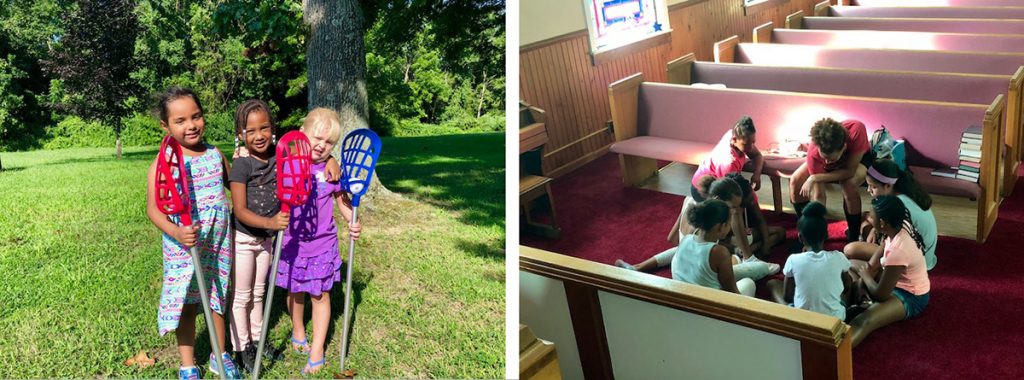BRDGETON – When children walked into St. John United Methodist Church’s vacation Bible school in Bridgeton on Aug. 13, many could identify with the lessons. The curriculum is tailored around the traditional teachings of the Nanticoke Lenni-Lenape and other Native American tribes.
“We didn’t want to use packaged curriculum because our children couldn’t identify with it,” said Cynthia Wilkes-Mosley, VBS coordinator. On average, 40 children from the community, many of them tribal members, participate in the weeklong program.
“We wanted to help the children learn how to walk in the Christian culture and Native culture at the same time,” she said.
Through storytelling, games and activities, the curriculum brings culture and Scripture together. The first part of the week was geared toward stories of creation using The Book of Genesis.
The children also heard tribal creation stories such as the Wasca tribal legend about how the coyote placed the stars. Coordinators even added a math component where they measured distances in the universe. Another day was spent focused on musical instruments in the Bible. The children learned how the Native flute is made and then crafted their own flutes out of water bottles.
“Being able to show these diverse traditions makes a huge difference with the children because it exposes them to things they have never learned about or possibly never even heard of or seen,” said Mary Wilks, a member of the Lenni-Lenape tribe and a vacation Bible school teacher.
“As a teacher, this means I am making these children more culturally aware and to avoid being ignorant to the world that may be different than their own,” she said.
The Nanticoke Lenni-Lenape descendants primarily live in Delaware and a large township in Fairfield, NJ. The VBS program has successfully built bridges of understanding among other ethnic groups in the community.
Tay’ Shawn Bowman has attended the church’s vacation Bible school for three years. He attends a different United Methodist church where members are primarily African-American.
“I like playing Native American games outside,” said Bowman, who plays football. He especially enjoyed lacrosse, based on the Native game stickball, which he had never heard of before attending VBS. Coordinators said he also enjoyed Native drumming and learning about Native ceremonies.
“Through storytelling, I learned to not be greedy,” he said.
“Many of these children go to school together and the VBS has become a way to teach about Native traditions and for their peers to become much more respectful about the culture,” said Wiles-Mosley.
The highlight of the week was an elders’ honor ceremony. This year, more than 25 elders visited with vacation Bible school students to share their wisdom and to participate in the ceremony.
“We have six elders who attend the VBS every day,” said Wilkes-Mosley. “The elders’ honor ceremony is an institution at our VBS. The connection is an important part of our Native tradition.”
This year, the vacation Bible school curriculum included the topic of dreams. Students studied Scripture such as Daniel 1:17 and 7:1-3, where God gave Daniel the ability to understand visions and dreams. They read “Coyote and the Dream” and “Grandmother’s Dreamcatcher” stories. They also heard the Anishinaabe legend of Nokomis and the spider.
The dreamcatchers were traditionally hung on cradleboards to catch bad dreams and allow good dreams to pass through. The children wrote down their scary dreams on colorful paper feathers and attached the feather to the web as part of the activities.
“I love to see the children become so engaged with learning about the Native traditions that they go home and tell their family and friends,” said Wilks.
Members of St. John United Methodist Church have developed three weeks of curriculum that they rotate and refresh each year. The church recently acquired a 7-foot wampum cross for the altar that they plan to include in new curriculum. Wampum — decorative shell beads used by Native Americans in belts, sashes and other crafts — was used as currency by the original colonies.
Church members also said they hope to format the curriculum in a way that could be published in the future.
Ginny Underwood is a freelance writer and communication consultant with ties to the Oklahoma Indian Missionary Conference. She is a member of the Comanche Nation of Oklahoma.

